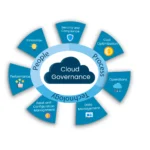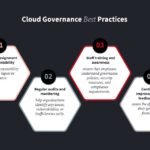Natural speech processing [ NLP ] is an branch of computer science as well as artificial intelligence [ AI ] which uses machine learning for computers to comprehend and converse using human languages.
NLP can enable computers and digital devices to recognise the language, comprehend it and create speech and text using computational language. rules-based models of human language along with statistical modeling machine learning [ ML ] and deep learning.
NLP research has ushered in the advent of the era of generative AI that ranges from the language knowledge in large model languages [ LLMs ] to the capability of the models for image generation to comprehend demands.
NLP is used in everyday life of the majority of people. It powers the search engine triggering chatbots to assist customers using spoken commands voice-operated GPS systems as well as virtual assistants in smartphones.
NLP is also playing significant part in solutions for enterprises which benefit to streamline and automate processes boost employee productivity and make it easier for mission-critical business processes to be simplified.
Benefits of NLP

Natural language processing systems performs efficiently and quickly when NLP models are trained properly the system can perform the administrative duties freeing up personnel to focus on more productive tasks. Its benefits can be:
Speedier insight-based exploration: Organizations are able to discover invisible patterns trend & links among different types of material. Text data retrieval can provide deep insights and analysis making better informed decisions as well as uncovering new business concepts.
Better savings on budget The huge quantity of unstructured text readily available NLP can be used to streamline the collection data processing and grouping of information using lesser manual work.
Fast access to company information:An organization can develop database of information inorganizational data that can be easily accessable using AI search. For sales reps NLP will benefit to quickly offer additional relevant data and help rise service to customers as well as benefit closing sales.
Challenges of NLP
NLP models arent perfect and they probably will never be because human speech is susceptible to erroneous. There are many risks to consider:
Training that is biased Like any AI function bias in the data that is used for training could cause the outcome to be distorted. The more varied the user are of the NLP function and the higher risk the chance of bias for instance in the context of the healthcare government and HR-related interactions. Datasets of training that are scraped off the internet for example could be biased.
Interpretation error In programming theres always the possibility of garbage in and garbage out [ GIGO ]. NLP methods could be confused when spoken input has strange dialect or mumbled overloaded with homonyms slang incorrect grammar and idioms. Also there are fragments of idioms mistakes in pronunciation or contractions. Or it is recorded using too much background noise.
A new vocabulary is being developed:New words are continually getting developed or brought into use. Grammar conventions can change or even be deliberately violated. In such cases NLP can either make an perfect estimate or admit that its not sure. Either way the result is problem.
Tone of voice when someone speaks about their words their delivery of speech or body language could provide different interpretation in comparison to words by themselves. The use of exaggeration to effect highlighting phrases for emphasis or humor can be interpreted as NLP and make evaluation of semantics more challenging and less trustworthy.
Human languages are brimming with multiple ambiguities which make it challenging for programmer to create software that discerns the intent of speech or text data.
The human language can take long time to acquire & many people never cease learning. However programmers need to help natural language-driven apps detect and comprehend irregularities so the applications they create are precise and efficient.
What is the process behind NLP? NLP is used

NLP is combination of the strength of computational linguistics and machine learning algorithms as well as deep learning. Computational Linguistics is field of linguistics which makes use of data science in order to analyse the language and speech.
It consists of two kinds of analysis: syntactical and semantic analysis. Syntactical analysis analyzes the meaning behind word or phrase by studying the syntax of words applying grammar rules preprogrammed by the computer. Semantical analysis employs syntactic output to extract meaning from the words & analyze their meanings in the structure of sentences.
Words that are parsed can be done in two different ways. Dependency Parsing examines the relationship between words for example the identification of verbs and nouns & the constituency process creates tree of parse [ or syntax tree ] that is stable and organized representation of the syntactic pattern of sentence or strings of words.
Parse trees that result from this analysis underlie the work of translators for languages as well as speech recognition. The ideal situation is that this analysis renders the output speech or text understandable for both NLP models as well as to humans.
self-supervised learning [ SSL ] in particular can be beneficial for supporting NLP due to the fact that NLP needs large quantities of data that are labeled to build modern artificial intelligence [ AI ] model. As these data sets need time-consuming annotation – process that involves human labeling manually–collecting enough information can prove to be challenge. Self-supervised methods can be more effective and efficient in time because they can replace portion or all manual labeled training data. Three methods of NLP comprise:
Rule-based NLP The very first NLP applications were essentially decision trees that required the use of preprogrammed rules. These applications can only bring responses to certain prompts like the first versions of Moviefone. As there isnt any machines learning or AI ability for rules-based NLP This function is extremely limited and is not scaleable.
statistical NLP is later version of HTML0 in the past statistical NLP automatically separates categorizes and labels the elements of audio and text & then assigns statistic probability to every possible meaning of the elements. It relies on machine learning which allows for more sophisticated breakdown of linguistics like the tagging of speech parts. The statistical NLP established the fundamental method of mapping elements of language such as words grammatical rules and so on–to the form of vector in order to enable language to be modelled together mathematical [ statistical ] methods like regression models or Markov models. This influenced earlier NLP advancements like spellcheckers & texting on T9 [ Text to 9 keys which was developed for Touch-Tone phones ].
learning NLP In recent years it has been discovered that deep learning models are now the predominant mode of NLP through together vast amounts of raw not structured data–both audio and text–to get more precise. The concept of deep learning could be considered the next step in the evolution of statistical NLP but with the distinction using neural networks instead of traditional models. There are variety of subcategories for models.
- Sequence-to-Sequence [ seq2seq ]models are based on Recurrent neural networks [ RNN ] they are typically used to aid in machine translation. They convert the words of the one area [ such like German ] German language ] to phrase from different domains [ such for English ].
- Transformer models:They make use of the tokenization of the language [ the location of the tokens–words or subwords ] as well as self-attention [ capturing connections and dependencies ] to estimate the relationships between the different languages with one another. Transformer models are able to be efficaciously trained using together the self-supervised learning using huge text databases. The most important development of model transformation is Googles Bidirectional Encoder Representations derived from transformers [ BERT ] and has been and still is the core of the way Googles search engine operates.
- Autoegressive models The HTML0 type oftype of transformer model has been specially trained to predict the next word of an order & is tremendous advancement in terms of the capability to produce texts. Some examples of autoregressive LLMs are GPT Llama Claude and the open-source Mistral.
- foundation models prebuilt and well-curated foundation models may speed up the start of an NLP project and improve confidence in the operation. As an example foundation models of IBM Granite[ tm ] foundation models can be used across all the industries. They are able to support NLP tasks like material generation as well as insight extraction. They also facilitate retrieval-augmented generation. It is technique to improve the performance of response through linking the model with outside sources of information. These models can also do recognized entities that involve gathering and locating the most important data from text.
To get more in-depth look @ the specifics of several technology and learning techniques refer to “AI against. machine learning and deep learning and neural networks. Whats the distinction?”
NLP tasks

There are variety of NLP tasks benefit analyze human texts as well as voice data using methods which benefit the computer to make sense of what its eating. These tasks can comprise:
Linguistics tasks
- Coreference resolution is the job of determining if and how two words are referring to the same person or entity. typical example would be to determine the individual or thing that particular pronoun is referring [ such for instance “she” = “Mary” ]. It can also be used to determine the meaning of metaphor or idiom within the text [ such for instance where “bear” isnt an animal rather tall and hairy individual ].
- Named entity recognition [ NER ] recognizes phrases or words as legitimate entities. NER is able to identify “London” as location or “Maria” as persons name.
- Part-of-speech Tagging is also known as Grammatical Tagging is method for finding out what the speech part of the word or text belongs to based on the context and usage. Part-of-speech for instance is way of identifying “make” as verb in “I can make paper plane” and also as nouns for “What make of car do you own?”
- Disambiguation of word meanings is the process of determining an appropriate word for an expression that has several potential meanings. This is accomplished by using semantic analysis to analyze the meaning of the meaning of the word within its the context of. As an example word-sense confusion helps to determine the meaning behind the word “make” in “make the grade” [ to accomplish ] as opposed to “make bet” [ to put in ]. Finding out “I will be merry when I marry Mary” is task that requires an advanced NLP method.
Supporting user tasks
- Speech recognition is also referred to by the term speech-to-text is the process of converting the voice information into text information. Speech recognition is component of all applications that follow the voice command or responds to asked questions. The thing that makes speech recognition particularly difficult is how people talk–quickly and running words & varying accents and intonation.
- Natural speech generation [ NLG ]might be described as the reverse of speech recognition also known as speech-to-text: NLG is the process of translating the structured data into conversational human spoken language. Without NLG computers will not be able to pass the Turing test which is where computers is trying to imitate conversation between humans. Chatbots like Alexa from Amazon Alexa as well as Siri of Apple Siri already do the job well & are assisting users with real-time assistance.
- Natural Language Understanding [ NLU ] is part of NLP which focuses on understanding the meaning of sentences. NLU can be used to discover the same meanings within various sentences or to analyze words with different meanings.
- Sentiment analysis attempts to extract subjective qualities–attitudes emotions sarcasm confusion or suspicion–from text. This can be used for sending messages to systems or to the individual who is most likely to give the following response.
NLP employ cases in variety of businesses.
Companies can utilize NLP to manage emails messages SMS audio newsfeeds video and other social media. NLP is the primary driver of AI for variety of modern applications in the real world. Here are few instances:
- Customer service Enterprises are able to deploy chatbots or virtual assistants that can respond quickly to specific requests and questions. If questions prove too challenging to answer for chatbot or virtual assistant to answer the NLP system will transfer the client onto live Customer Service Representative. Virtual assistants like IBM watsonx[ tm ] assistant as well as Siri from Apple Siri and Alexa by Amazon Alexa employ speech recognition technology to detect the patterns of voice commands as well as natural language generation in order to reply by taking appropriate actions or providing helpful feedback. Chatbots react to written texts. They respond to text entries. desirable chatbots can also detect clues to human needs and utilize their knowledge to deliver more efficient solutions or choices as time passes. The next enhancement for these applications is question answering the ability to respond to questions–anticipated or not–with relevant and helpful answers in their own words. Automated responses benefit cut costs keep agents from having to deal with repetitive queries as well as increase customers satisfaction. Chatbots may not all be powered by AI However modern chatbots are increasingly using conversationsal AI methods such as NLP for understanding user concerns and respond automatically to them.
- FAQ The truth is that not everyone has the time to go through the FAQ to find the answer. However NLP is great opportunity to benefit.NLP helps increase FAQs. If user has an inquiry and the NLP feature searches to find the perfect solution from the possible responses and displays that on the screen of the user. The majority of customer queries have who/what/when/where/when/where type which is why this tool will save the staff from the need to answer the same questions.
- Correction of grammar The guidelines of grammar may be used to word processing as well as other applications & the NLP function is taught to recognize grammar mistakes and suggests correct wordings.
- Machine translation Google Translate is prime example of readily accessible NLP technology working. The most effective machine translation requires more than just replacing words in the one language by words from other languages. The most effective translation accurately perceives the tone and meaning of the source language and then converts it into words that have similar meaning & the desired influence on the other language. The tools for machine translation are getting more precise. One method to try out machine translation program involves translating text into one language back in the same language. One of the most frequently cited examples of this is to translate “The spirit is willing but the flesh is weak” from English to Russian and then back to Russian was success “The vodka is good but the meat is rotten.” Recently another outcome is “The spirit desires but the flesh is weak.” Google Translate can convert English from Russian into English and then return the text in its English text back to the original “The spirit is eager But the flesh is weak. “
- Removing personally identifiable data [ PII ]: NLP models are taught to locate quickly personally identifiable details within documents which could be used to identify people. Industries that handle large volumes of sensitive information–financial healthcare insurance and legal firms–can quickly create versions with the PII removed.
- Analysis of sentiment Following period of training in specific industry or business and business-specific language an NLP algorithm can search text for specific phrases and words to assess the mood of client in real time either neutral positive or negative. The message that is received can benefit to determine the perfect way for it to be dealt with. In addition the communication that is received does not have to be in real time: NLP can also be utilized to study the feedback of customers or recordings of call center calls. Another choice is to use an NLP API which can allow the analysis of text after the fact. NLP will uncover useful data insight from social media postings review comments or responses. These can be used for analyzing emotions and attitudes when it comes to product or events as well as promotions. Companies that use information can employ sentiment analysis to design their products or advertising campaigns among others.
- Spam detectionMany users may not believe that spam detection is an NLP option however the desirable techniques for detection of spam utilize the NLPs ability to classify text in order to analyze emails for any the language that indicates phishing or spam. The indicators include excessive use in financial terminology negative grammar threats language in way that is not appropriate for urgency or incorrect spelling of corporate names.
- text generation: NLP helps put the word “generative” into generative AI. NLP can benefit computers create speech or text that sounds authentic and sounding natural sufficient that it could be interpreted as human language. It can also be used for creating the initial drafts for blogs as well as computers memos letters or tweets. If you have an enterprise-class technology the high-quality of the generated language could suffice as real-time automatic functions chatbots and virtual assistants. The advancements in NLP have been enabling the engine of reasoning behind artificial intelligence [ AI ] systems. AI systems generating new possibilities. Microsoft[ r ] Copilot is an AI assistant that is designed to improve the productivity of employees and boost their creativity in daily tasks. Copilot is employed in various tools that are used daily.
- Text summarization The process of summarizing text makes use of NLP methods to process massive amounts of text in digital format to create synopses summaries & summary for databases of indexes and research and for readers with busy schedules who arent able to go through the entire text. The perfect Text summarization software uses semantic reasoning as well as the natural language generator [ NLG ] to add valuable context and draw conclusions from the summaries.
NLP case studies for industries

- Finance Financial transactions nanoseconds could be the difference between success or failure while accessing data and making transactions or trades. NLP will speed up the processing of data from accounts financial reports reports and regulatory reports news releases and perhaps social media.
- Healthcare The latest medical breakthroughs and advances can come sooner than the majority of healthcare professionals have the capacity to absorb. NLP and AI-based software could benefit accelerate the process of analyzing medical records as well as research papers thereby making more informed medical choices possible. They can also assist in helping in the identification or prevention of diseases.
- The insurance: NLP can analyze the claims of clients to find patterns which can benefit identify problems and weaknesses in claims processing which can lead to greater efficiency of processing and worker efforts.
- Legal The majority of legal matter could require the review of mountains of paperwork including background details as well as legal precedent. NLP will benefit to automate the process of legal discovery helping to organize documents speeding the review process and assisting assure that all pertinent details are gathered for review.
Python and the Natural Language Toolkit [ NLTK ]
It is Python programming language offers variety of libraries and tools for carrying out particular NLP tasks. The majority among these NLP tools can be found within the Natural Language Toolkit or NLTK the open-source collection of programs libraries and educational resources to build NLP software.
The NLTK comprises libraries to support wide range of NLP tasks as well as subtasks including the parsing of sentences word segmentation stemming and lemmatization [ methods for trimming words to their root ] and tokenization [ for splitting sentences phrases paragraphs passages & paragraphs into tokens to benefit the computer to understand the written text ].
Additionally it includes libraries to implement capabilities like semantic reasoning the ability to draw logical conclusions on the facts that are extracted from texts. With NLTK it is possible for organizations to see the result of speech tagging. Tagging words may seem to appear to be difficult task as words could be different in meaning depending the context in which theyre utilized the procedure is complex.








4 thoughts on “Natural Language Processing : NLP Guide 2024”